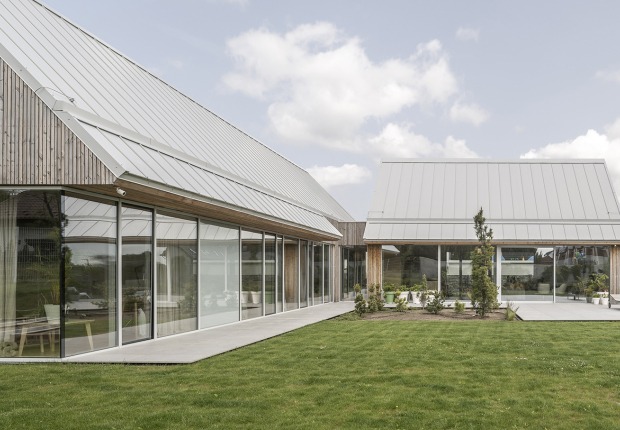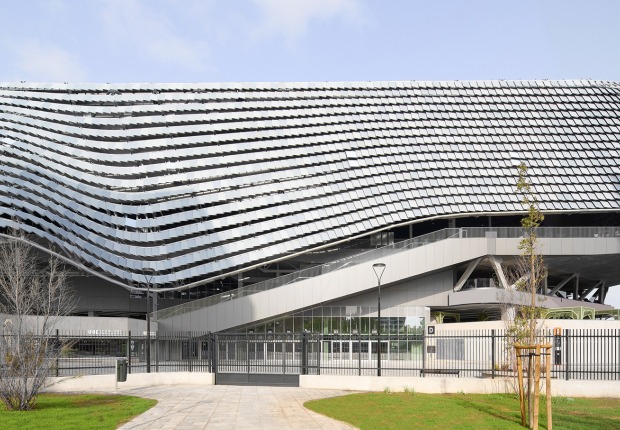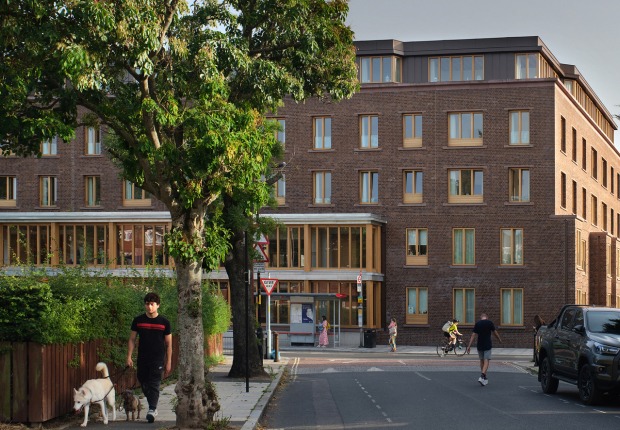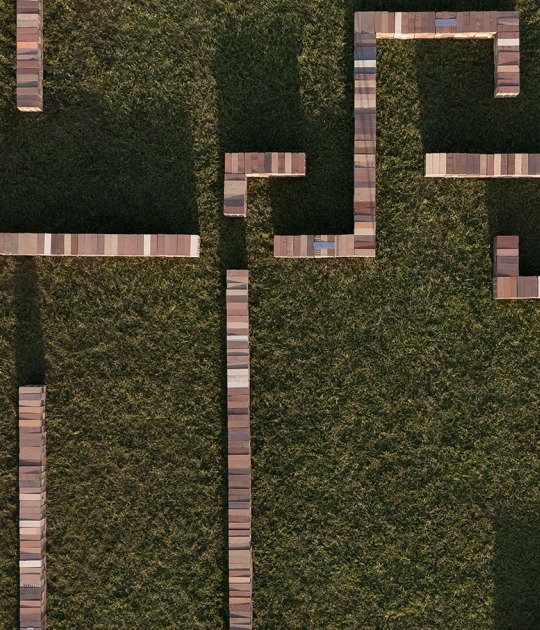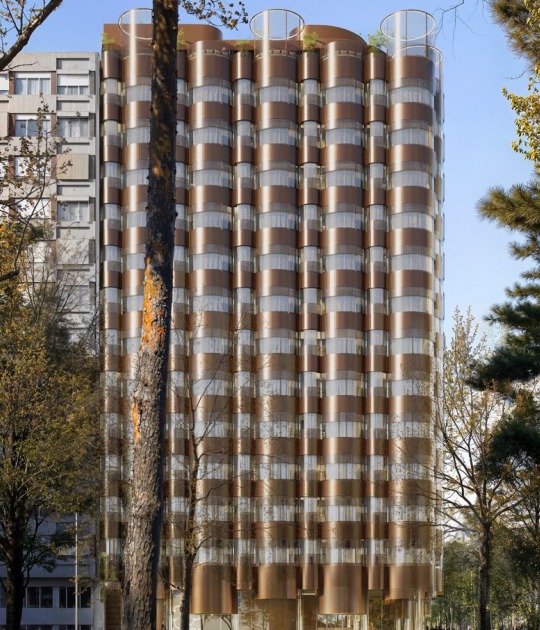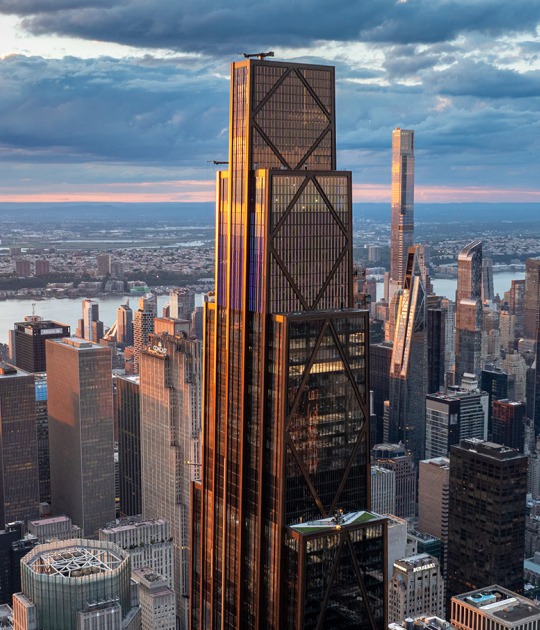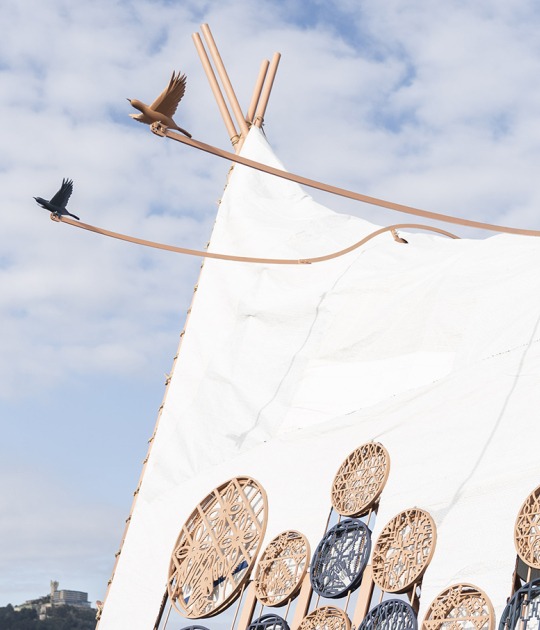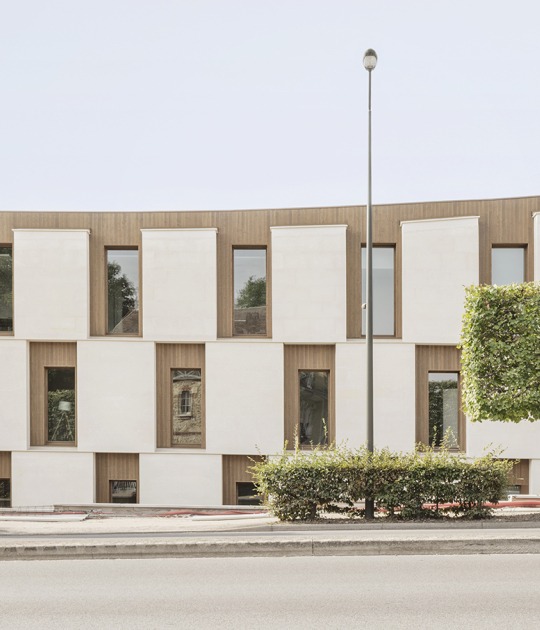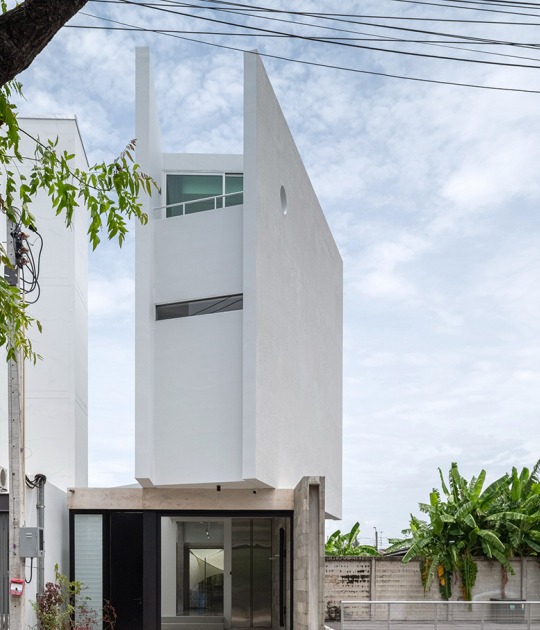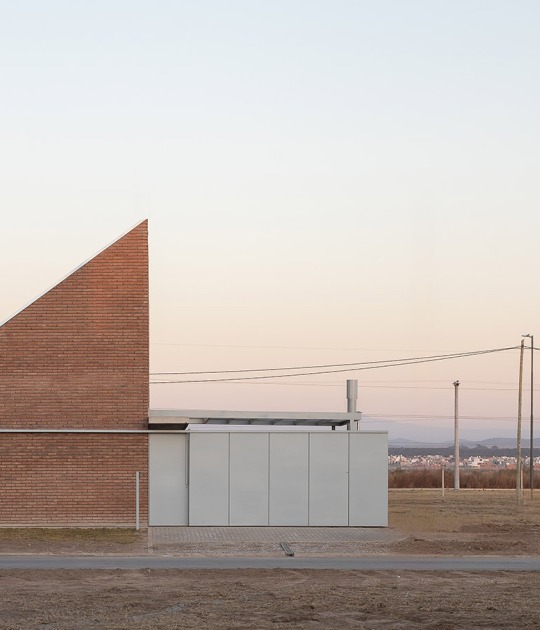
«Traces» by Balsa.Crosetto.Piazzi and Giorgis Ortiz is a space that uses 10,000 dry-stacked bricks, which takes on a long, low shape, tracing the silhouette of the Great Buildings. The work invites reflection on the Fair's ambition and theatrical design, creating spaces without walls and a mass without permanence. After the Biennale, the bricks will be reused, leaving no residue, only the memory of the experience.
The work has a clear message with an underlying intention, reflecting permanence through time. The work uses techniques used to simulate permanence, white spray paint and plaster applied to temporary structures to resemble neoclassical architecture.

Traces by Balsa Crosetto Piazzi and Giorgis Ortiz. Photograph by Marcos Guiponi.
Project description by Balsa.Crosetto.Piazzi and Giorgis Ortiz
TRACES is a new collective space in Jackson Park, constructed from 10,000 dry-stacked bricks. Located on the site of the 1893 Chicago World's Fair, the project reflects on the monumental scale of the exhibition and the techniques used to simulate permanence: white spray paint and plaster applied to temporary structures to resemble neoclassical architecture. These buildings were never intended to last; they functioned as stage sets within the fair's spectacle.

The installation takes the form of a long, low line of bricks that traces the footprint of the Great Buildings, those central to the 1893 fair. By employing a durable material like brick in an impermanent and unbound manner, TRACES offers a silent critique of shifting architectural values: from spectacle to substance, from permanence as illusion to impermanence as intention.
TRACES is both a curated reconstruction of what was lost and a framework for what might come, a collective space shaped not by nostalgia, but by presence, activated anew during this century's architectural event: the Biennial.























